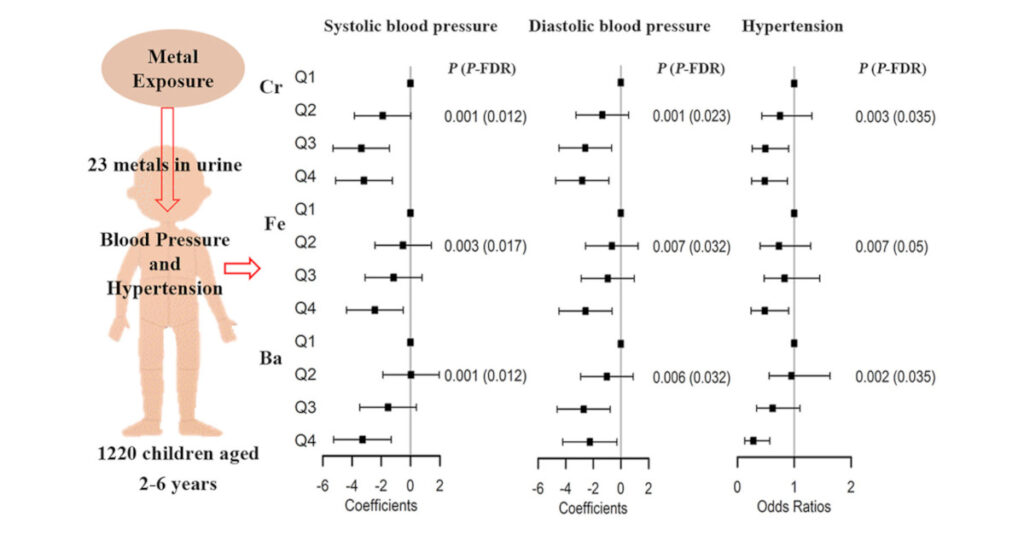Exposure to metals may contribute to hypertension. The purpose of the study by researchers of Hubei University of Medicine and Renmin Hospital (both in China) was to examine the association between urine metals and blood pressure and hypertension in Chinese preschoolers.
In this cross-sectional study, 1220 eligible participants were measured for urine metals, blood pressure, and relevant covariates. Inductively coupled plasma mass spectrometers were used to measure metal concentrations in urine. After adjusting for possible confounders, single and multiple metal regression models were used to examine the associations between urine metal and blood pressure and hypertension.
The single metal model found that chromium, iron, and barium urine concentrations are negatively related to levels of systolic blood pressure, diastolic blood pressure, and hypertension risk (all P-FDR adjustments <0.05). Significant associations of urine chromium concentrations with systolic blood pressure, diastolic blood pressure and the risk of hypertension were found in the multi-metal model (β or OR (95% confidence interval) was −3.07 (−5.12, −1.02), −2.25 (−4.29, −0.22), and 0.51 (0.26, 0.97) for 3rd quartile, compared with 1st quartile, respectively). The multi-metal model found the same association for barium concentrations, but not for iron quartiles.
Additionally, urine chromium, iron, and barium may have joint effects on systolic blood pressure, diastolic blood pressure, and hypertension. The relationship between chromium, iron, and barium concentrations and blood pressure could be modified by the child’s age and body mass index. Among preschool children, exposure to chromium, iron, and barium was inversely related to blood pressure and hypertension.






